Concrete is the go-to patio option for many people because of its functionality. It is as durable as it gets and requires little to no maintenance. Concrete is the most suitable patio choice in some regions because of its characteristics. It is cheaper than other similar materials like stones and bricks.
If you have a concrete patio and you are looking for inexpensive ways to hide its boring look, covering the concrete with different materials is the most acceptable way. Concrete is hard on the feet and is plain with little to no aesthetics, making your patio uninviting. However, the patio should have the appeal its usefulness deserves, which is why concrete patio covers exist.
So how do you cover the concrete patio in your home? The answer to this question is in this guide, including other helpful information to help you choose the right cover. But first, let’s jump into the many affordable ways to cover that concrete patio.
Inexpensive Ways to Cover Concrete Patios
While there are many ways to cover a concrete patio and add the necessary aesthetics to improve the patio’s appeal, some are quite expensive. Here, we’ll see affordable ways to cover the concrete patio while still enjoying its many benefits, including the addition of style and beauty.
1. Use an Outdoor Rug
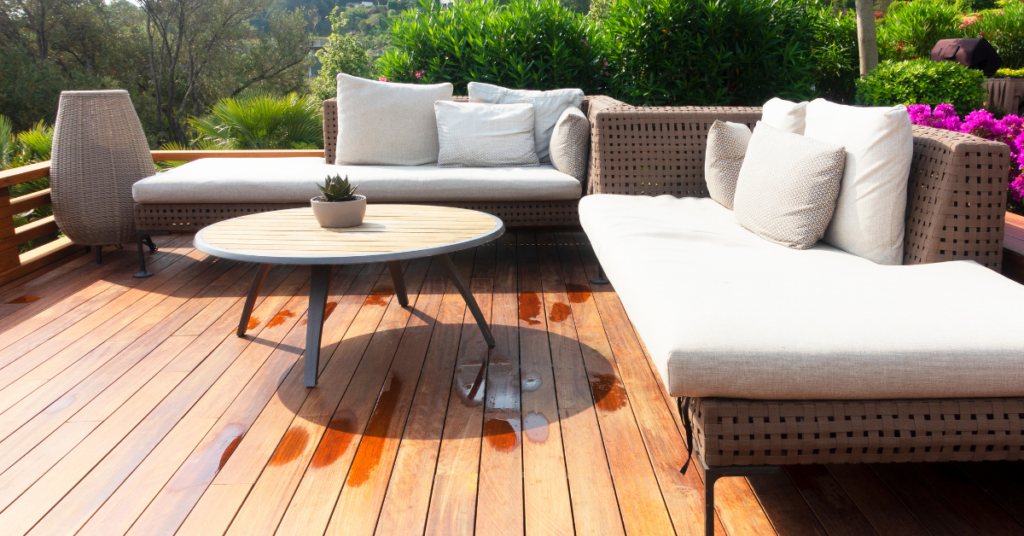
Rugs offer so much variety as you can choose the color and pattern you like the most at an incredible price since rugs are generally affordable. In this case, you’ll be going for an outdoor rug over your concrete patio which will hide the concrete and become the center of attraction.
With rugs, you can easily match them with your furniture and create striking color contrasts that boost the area’s appeal. In addition, rugs add warmth and keep dust away but require washing periodically. While outdoor rugs are not waterproof, they are water resistant and dry quickly when they come in contact with water, which is why they are great outdoors, even under the rain.
Rugs may be the fastest way to cover the concrete patio, as no construction or extra work is required. You choose the right rug for your space, roll it over the concrete, and it’s ready to use.
2. Be Creative With Paint
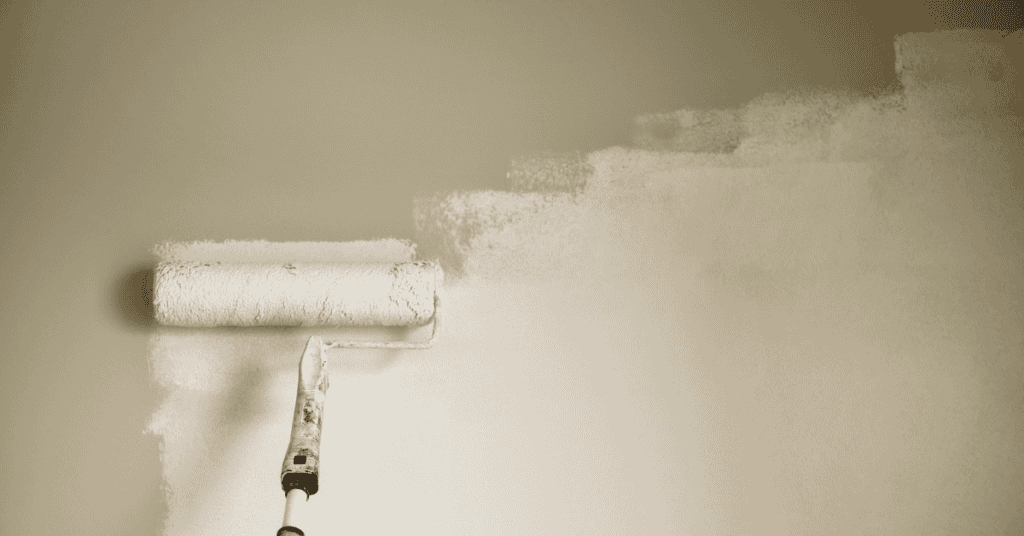
Whether it is floral or geometric patterns, painting truly allows you to explore your creativity. In addition, painting is an affordable way to add a beautiful design to your otherwise dull concrete patio, with the option of trying out whatever designs suits your fancy. You can also employ design ideas over the internet on your concrete.
The good thing about painting is the variety, as you can achieve many different colors with many more combinations. You can start by painting a base color and then add designs with a color that complements the base color. Stencils help you achieve clean repetitive designs on your concrete with little effort. You can buy stencils from hardware stores or cut yours using cardboard.
After painting the concrete, the warmth and vibrancy change the concrete’s hard look. The paint on concrete can last for up to 5 years before you may need to reapply it.
3. Building a Decking Floor
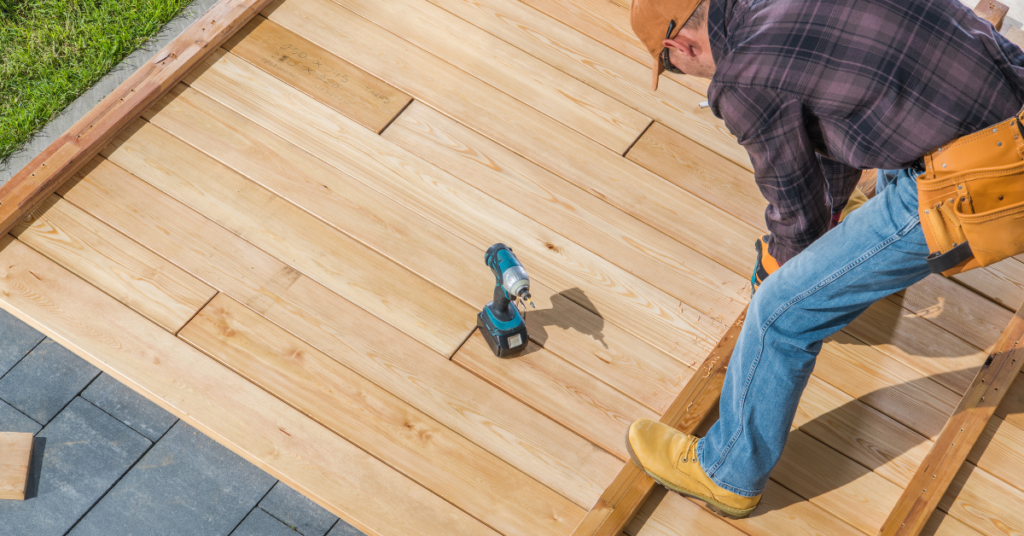
If you love DIY activities, this decking floor concrete patio cover will be an interesting choice. The good thing about building a deck over concrete is that you only need a little experience to complete it. You can construct a befitting deck with basic wood cutting and joining experience.
Wood is gentle on the feet and welcoming, so it is not surprising that a deck over concrete is a popular option. However, this inexpensive method requires risers and sweepers where you can screw or nail the wooden boards.
Using the concrete cover idea, you can create a tropical or traditional feel to the area. In addition, you get to choose the type of wooden board to use from the several suitable boards, each with its pros and cons.
4. Using Concrete Stamps
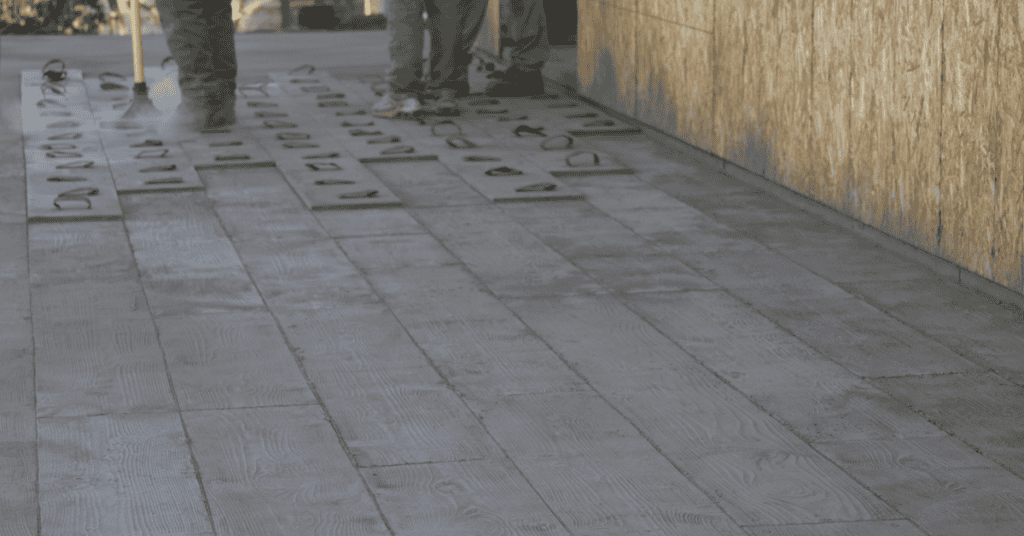
This method is only possible before the concrete dries, so you have to use concrete stamps before building the concrete patio. Concrete stamps are easy to do and offer stylish designs on the concrete surface that imitates the designs of pavers.
Using concrete stamps, you can make concrete look like stones, bricks, tiles, and more. These stamps come in various patterns made from molded polyurethane. Then, you press down the stamp into the wet concrete to replicate the pattern on the stamp when it dries.
5. Lay Concrete Blocks
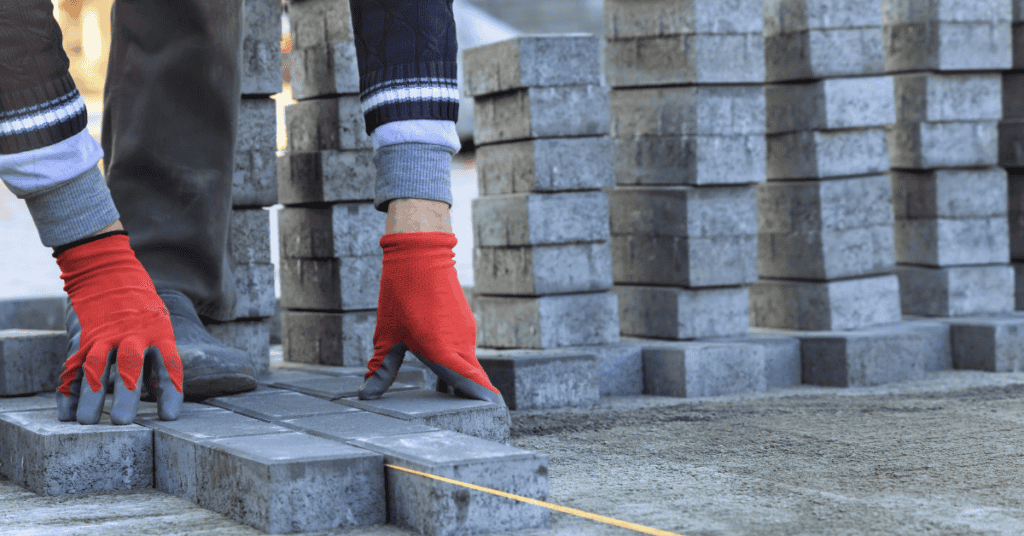
Concrete blocks are sometimes called breeze blocks because they have hollow designs. While breeze blocks are mostly used to make fences, they can also fit on concrete which is perfect for covering your concrete patio. With several designs available, you have a wide variety to choose from, but it is best to select blocks with close patterns as they are gentler on the feet.
They are affordable and easy to install by arranging and setting using cement. Typically, the more decorative the block is, the more expensive. However, they fit into our list of affordable covers for concrete patios.
6. Stain the Concrete
Staining concrete can improve the look of the concrete and remove that dull, uninviting look of bare concrete floors. With stains, you can choose between acid-based and water-based concrete stains. While they are both different, they offer an obvious change to your concrete patio.
Acid-based concrete stains are more durable and will last longer without fading as they form chemical bonds with the cement in the concrete. These bonds make it difficult for the stains to peel or chip off. However, acid stains take longer to dry and contain toxins that may be harmful when inhaled for a long time.
What water-based concrete stain lacks in durability, it gains in ease of application and variety as there are several colors you can utilize. Unlike acid stains, water stains are toxin-free and dry faster. No matter your choice, concrete stains are affordable and come with style.
7. Cover With Colored Concrete
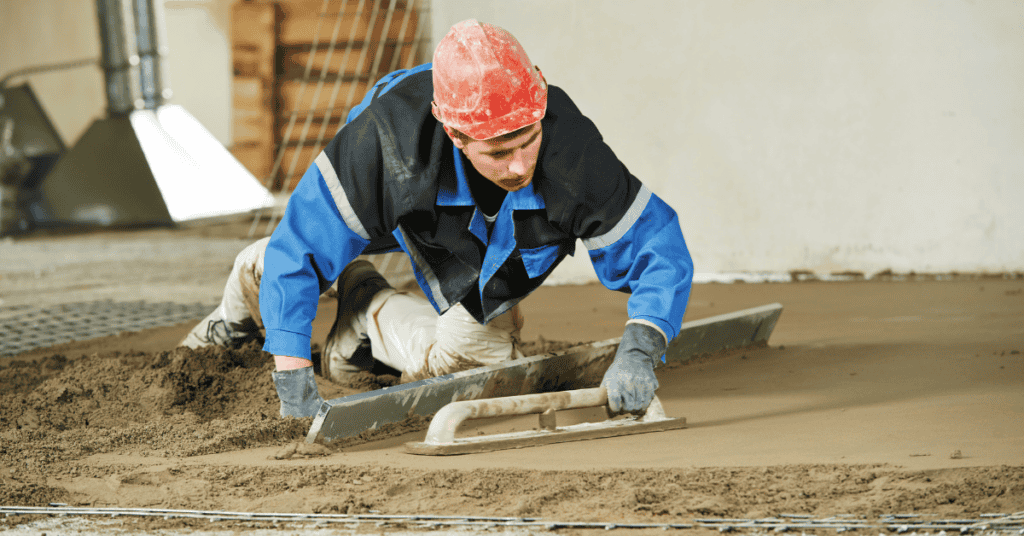
One of the best ways to cover concrete is with more concrete. But this time, with colored concrete, that is the opposite of the dull concrete floor you have on your patio. You can rejuvenate old concrete by coating it with any colored concrete of your choice. But, again, blending the color with the patio furniture or building color brings the most appeal.
Before you can coat with colored concrete, you should fill all cracks, and clean the surface, removing dirt and dust that affect the new coat. Then, allow the area to dry before adding the concrete layer and seal. It should set in about 24 to 48 hours, after which you’re ready to enjoy the colored concrete for up to 50 years.
8. Cover With Tiles
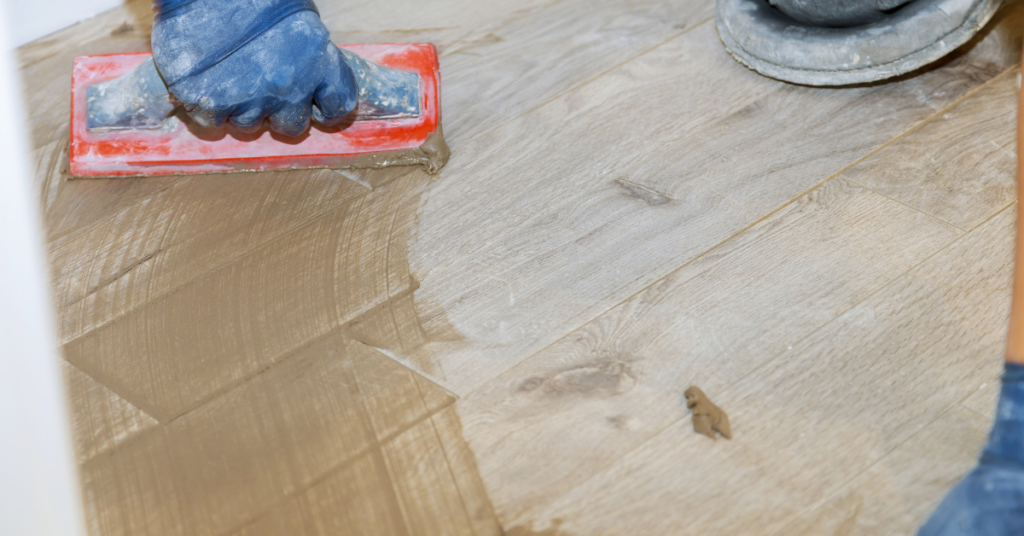
Tiles are not the most affordable options for covering concrete, but they offer a sleepy, attractive coverage, different from many other ways. With tiles, there are varying designs and colors to choose from that can complement the whole patio or your home.
Tiles are plain, so they are great for people looking for some aesthetics in a natural form. It retains the basic nature of concrete but with extra appeal. With tiles, you can install them at the center or in a particular part of the patio without the need to cover the full area.
9. Use Epoxy

Epoxy is another excellent but slightly pricey concrete patio cover where users can reduce costs by applying it themselves rather than using professional services. Epoxy is durable when it sets, giving you up to 20 years of usage. Water-based epoxy is the go-to choice on your concrete patio as it is easy to apply and does not contain harmful chemicals.
Applying epoxy uses gardening tools like a hose, brush shovel, paint brushes, roller, duct tape, stirrer, and more. It would help if you started by cleaning the surface before using a hose and a power scrub and then removing the moisture using a shop vac and squeegee. In the final process, you etch with a respirator before applying the epoxy using a roller.
10. By Exposing Aggregate
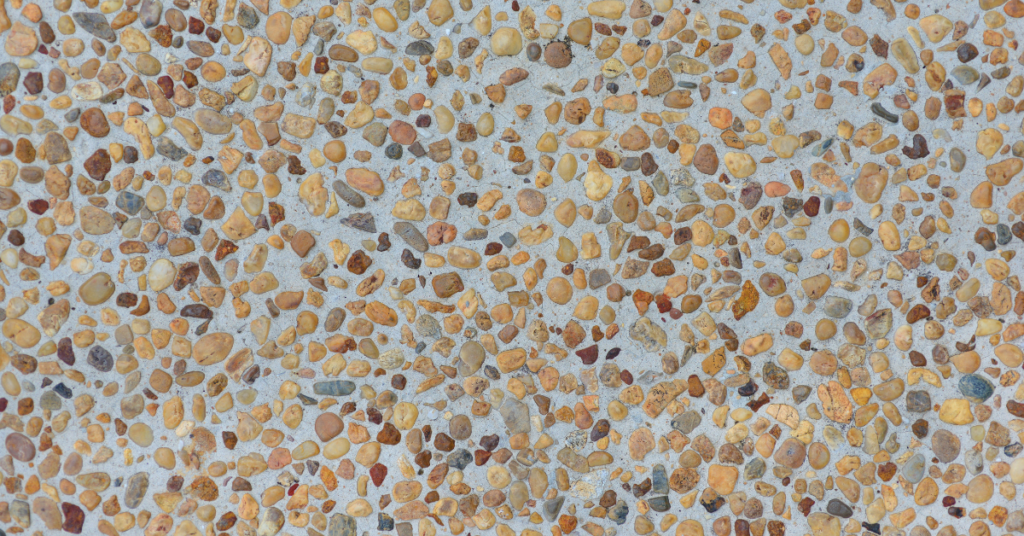
While this is not necessarily covering a concrete patio, it is still a way of changing boring, hard concrete to a more exciting floor that is gentle on the feet. Concrete patios have aggregates underneath the smooth cement, which can be exposed with the right technique. Exposing the aggregate will reveal bumpy and loose pebbles that are gentle on the feet.
Exposing aggregate is perfect for moist areas as the aggregate is slip-resistant and can absorb a decent amount of water. While contractors spray some chemicals to loosen the cement and expose the aggregate, we’ll add the aggregate to the top of the concrete without damaging the cement.
Clean the concrete thoroughly and add the aggregate to the top using a squeegee. Ensure the pebbles are spread properly and leave for 24 hours before applying the sealer.
11. Cover With Artificial Grass
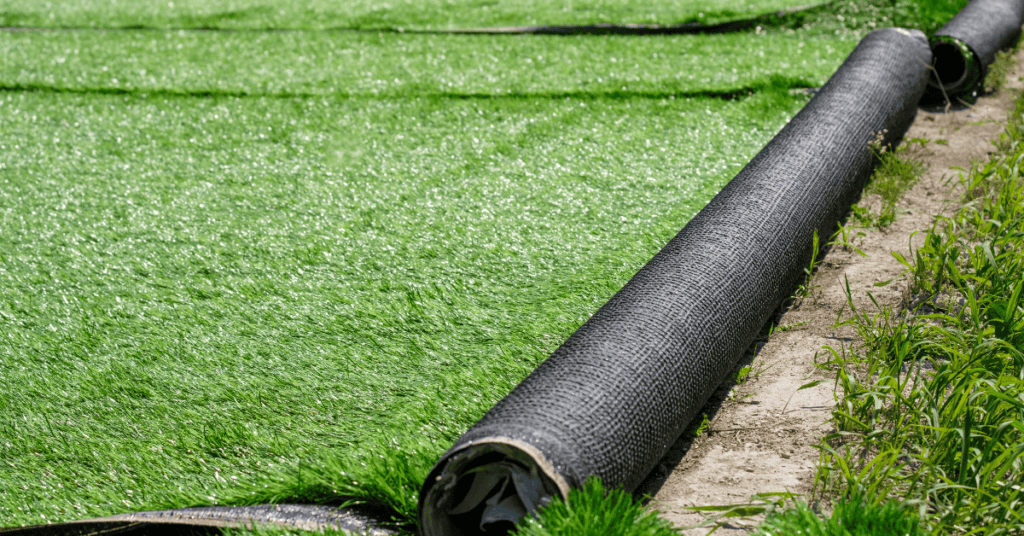
Artificial grass comes with a lot of advantages, especially when it comes to the minimal maintenance it requires. For example, you can cover the hard concrete floor in your patio with soft artificial grass that you only need to cut once.
Of course, you’ll need cleaning tools, glue, a hose, a sharp knife, and grass. Ensure to clean the area before rolling the grass on the surface and gluing the ends with other parts to ensure uniformity. Allow to dry for a few hours, and add some soil to keep it firmly on the ground. Complete the process by brushing the fiber and raising the grass fibers. Installing artificial grass is easy, reducing the overall cost as you don’t spend on installation.
12. Add Stepping Stones and Gravel
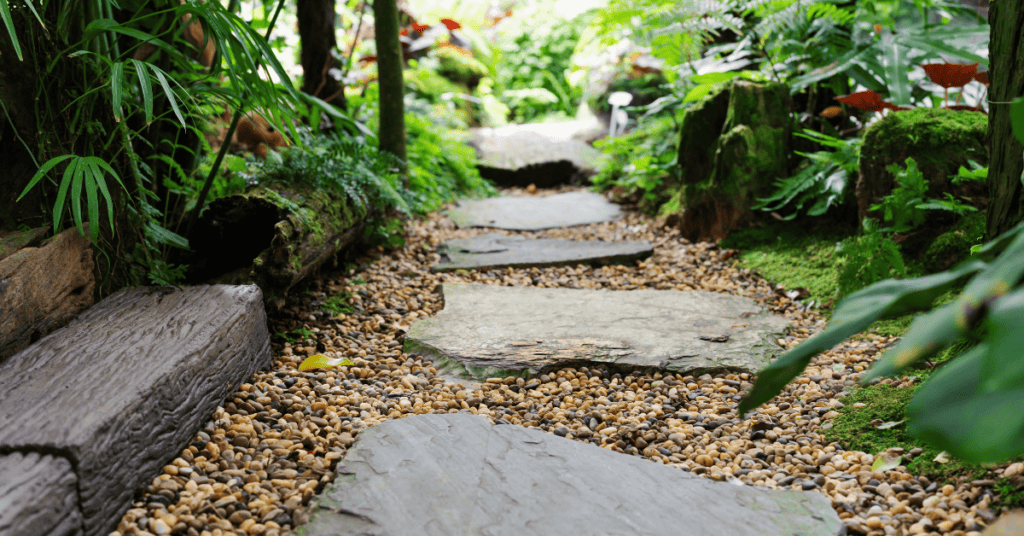
You can design your concrete patio using stepping stones placed in a pattern depending on the major use of your patio. You can then cover the area around the stepping stones with colorful gravel. Using stepping stones is unique as this design is mostly used for walkways.
You can place the stepping stones around the sitting area and towards the center. The idea is to place the stones on the places that see a lot of traffic and guide people on the path to stay. These stepping stones and gravel are ideal if you’re looking for a unique but attractive cover for your patio. The stepping stones can be made from concrete, plastic, or tiles.
Summary
You do not need to break the bank to improve that boring concrete patio in your backyard. Instead, you can use inexpensive materials to cover the concrete and add warmth and appeal to the area. Some materials are expensive, but you can cut costs by installing them yourself using DIY guides.

